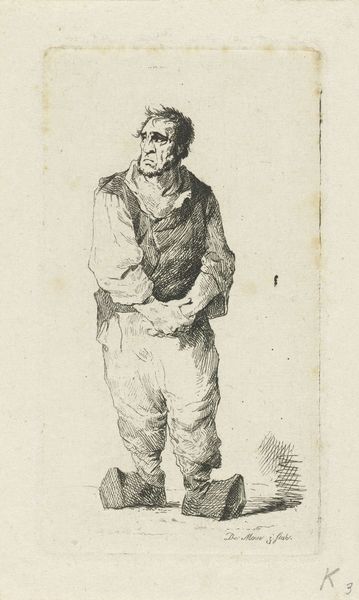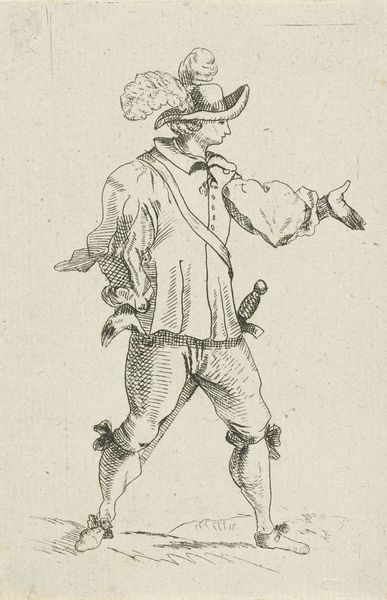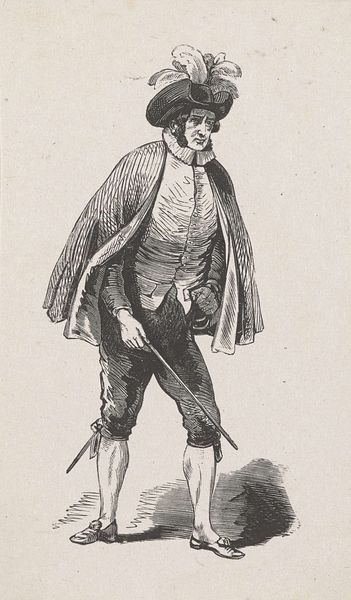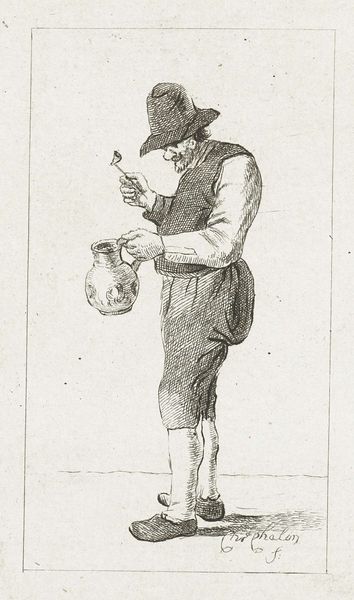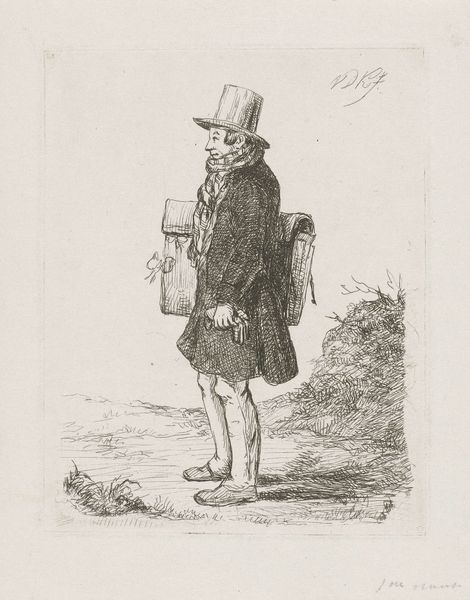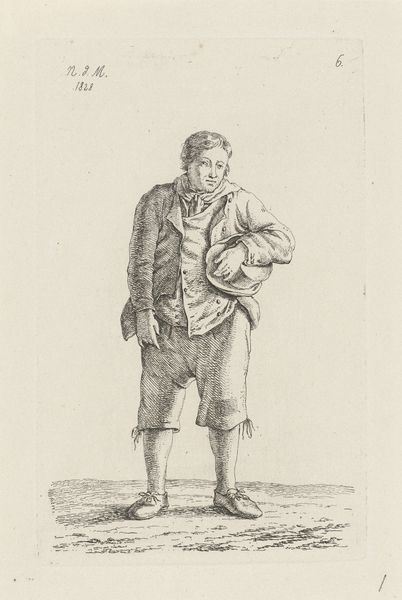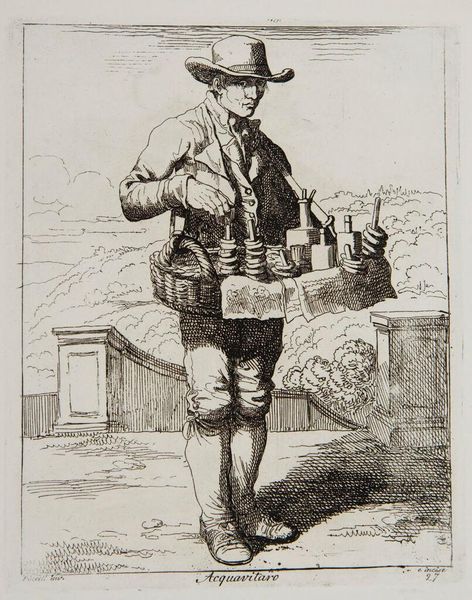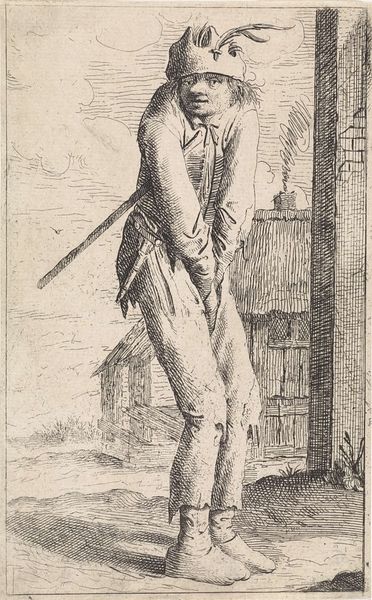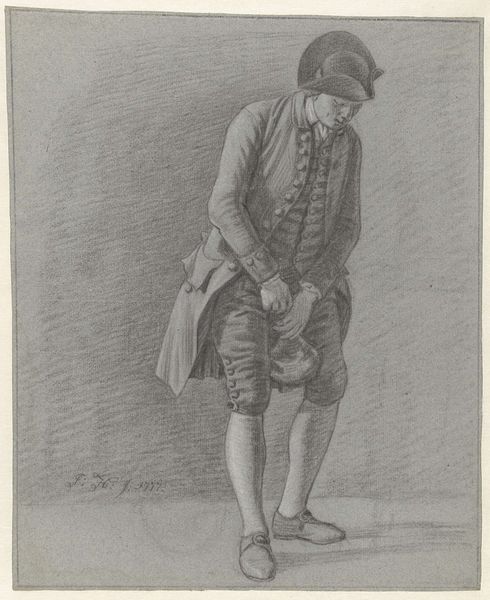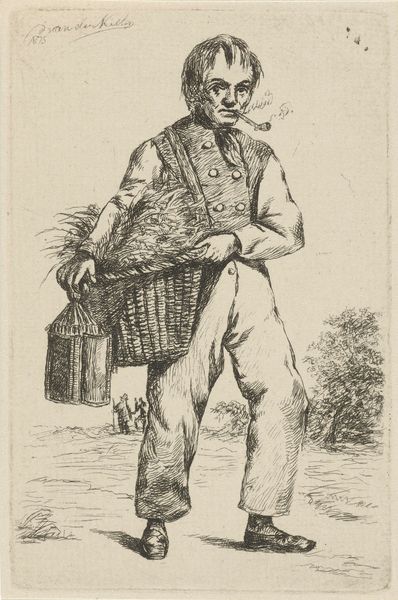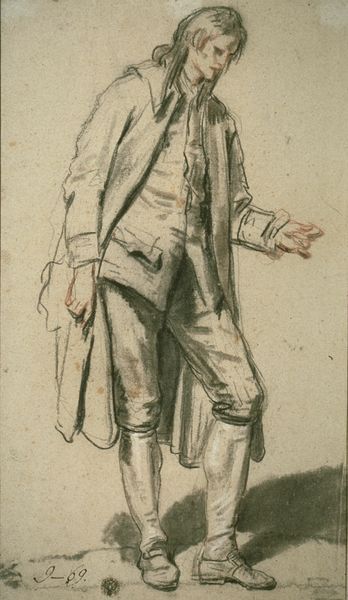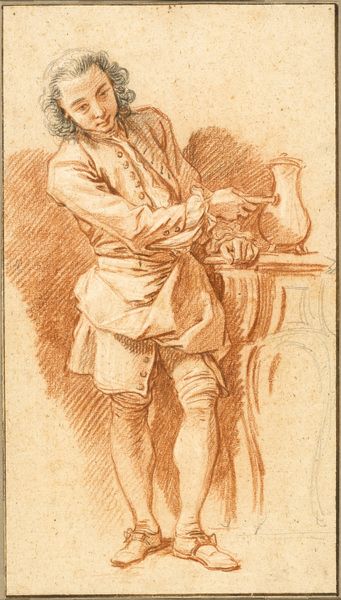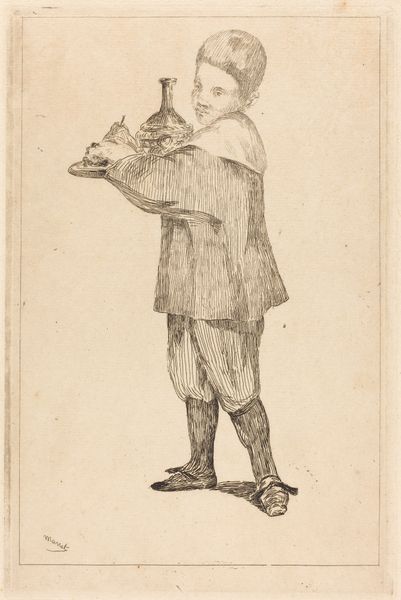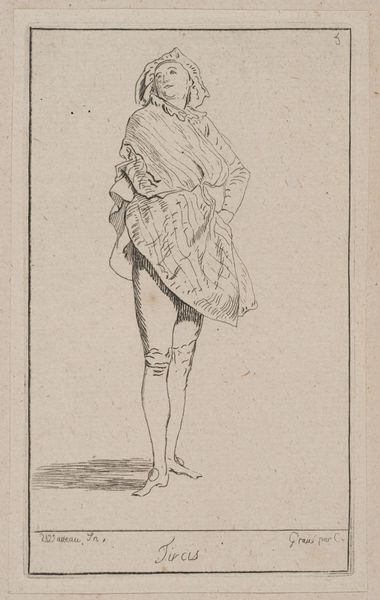
Dimensions: height 120 mm, width 77 mm
Copyright: Rijks Museum: Open Domain
Curator: This is Isaac Weissenbruch’s “Standing Man with his Hand in his Vest,” believed to have been created sometime between 1836 and 1912. It's currently held here at the Rijksmuseum. Editor: What strikes me first is the light pencil work; it gives the figure a sort of hesitant presence. Is this work finished? The sketch-like quality makes me think it could be a study of a local figure. Curator: Absolutely. Considering Weissenbruch’s political leanings and engagement with Realism, it's plausible he sought to capture everyday individuals, offering a window into the working class and perhaps critiquing the societal structures that defined their lives. Editor: I see that tension you're talking about in the posture—one hand casually in his vest, while the other rests on the barrel, a suggestion of hard labor meeting an air of… well, defiance perhaps. What kind of status did figures like this have in Dutch society? Curator: Often marginalized, or rendered invisible. Genre painting aimed to give visibility and importance to such ordinary folks. I read his stance as one of cautious resilience, not so much defiance but more about existing with agency in a restrictive setting. Editor: Yes, "cautious resilience," I like that. Technically speaking, the quick pencil lines suggest movement—even though he’s standing still, the implied motion suggests this is a very "now" image of someone who likely moves through the world more often than standing for it. It has this immediacy I'm finding. Curator: It's like a brief encounter. The drawing certainly invites discussions around social roles, class consciousness, and the subtle ways artists can challenge normative representations through simple observations of daily life. His stance also raises questions of performativity. Editor: He performs the everyday, in his sturdy hat, patched clothing, clunky boots and pipe. Overall, the work gives an understated view into social dynamics and portraiture as the artistic expression of those interactions. Curator: A necessary view.
Comments
No comments
Be the first to comment and join the conversation on the ultimate creative platform.
